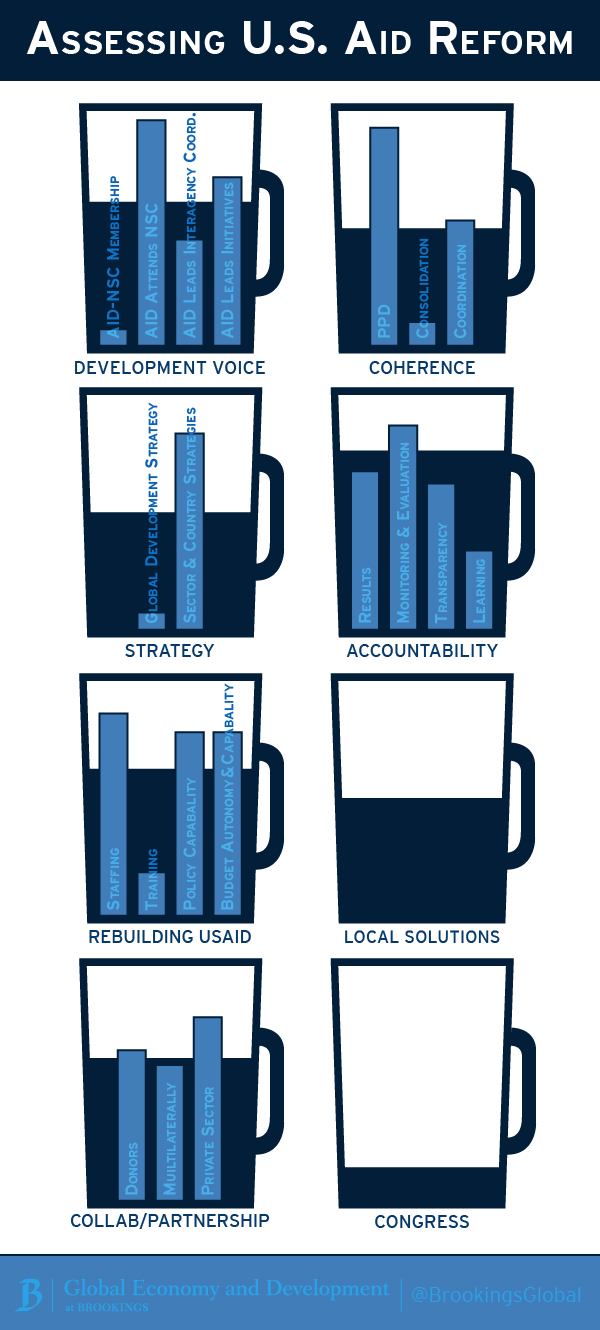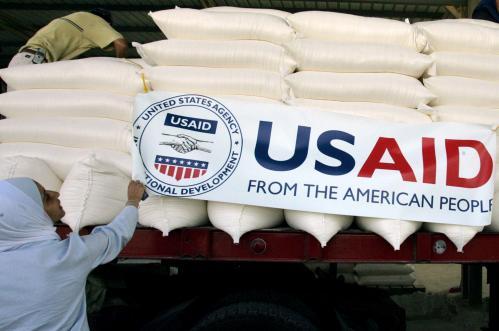Editor’s Note: In this blog, George Ingram discusses the history and progress made in U.S. aid reform. For a more detailed look at aid reform over the last decade, read Ingram’s latest paper, Adjusting Assistance to the 21st Century: A Revised Agenda for Foreign Assistance Reform.
Extending a helping hand to those outside our borders is as American as apple pie. The first documented case occurred within a decade of our birth as a nation, in 1794 when the Congress appropriated funds to aid refugees fleeing Haiti. Nearly every decade since the U.S. has extended aid to those in need and to advance our national interest. The Marshall Plan is remembered sixty years later as one of the great selfless and strategic actions by a world power.
It is because we as Americans understand that peace and prosperity in other countries and the world are vital to our interests as a nation—both the Bush and Obama administrations placed development as the co-equal of defense and diplomacy—that we care that our assistance programs are as effective as possible. An aid reform movement to reform our assistance policies and programs commenced around the turn of the century, built to a formal agenda by 2007, and is now entering a stage where assessment of what has been accomplished is possible. Administration initiatives that include reform elements extend from the Bush Administration’s creation of the Millennium Challenge Corporation (MCC) and President’s Emergency Plan for Aids Relief (PEPFAR) to the Obama Administration issuing a Presidential Policy Directive on Development and most recently creating the Innovation Lab at USAID.
The aim of the aid reform agenda is to improve the effectiveness of U.S. assistance policies and programs. The assumption is, not that current programs are not useful or producing valuable results, but that they could be even more effective if better grounded in local realities, guided by a clear strategy and coherence, and more accountable to U.S. taxpayers and intended beneficiaries through greater transparency, evaluation, and learning.
My recently published paper, “Adjusting Assistance to the 21st Century: A Revised Agenda for Foreign Assistance Reform” assesses the aid reform efforts of the past decade and suggests how that agenda can be moved forward in the last two years of the Obama administration. It identifies eight elements and judges how key Bush and Obama administration initiatives have advanced or impeded that agenda. While the reform agenda did not jell until the last years of the Bush administration, several of its initiatives did reflect key development lessons and jump-started the reform effort. The Obama administration has pursued the most comprehensive reform agenda of any administration and, while strong on policy commitment and initiatives, there is still work to be done on the implementation side.
The degree of progress on aid reform is in the eye of the beholder. One’s assessment is a balance of expectations, objective measurements, and subjective observations. The graphic below depicts the eight elements of reform presented in the paper and makes an unscientific judgment of the status of each element and sub-component. I look forward to you making your own judgments after (or without) reading the paper and sharing them below.




Commentary
Modernizing U.S. Foreign Assistance: A Glass More Than Half Full
July 24, 2014